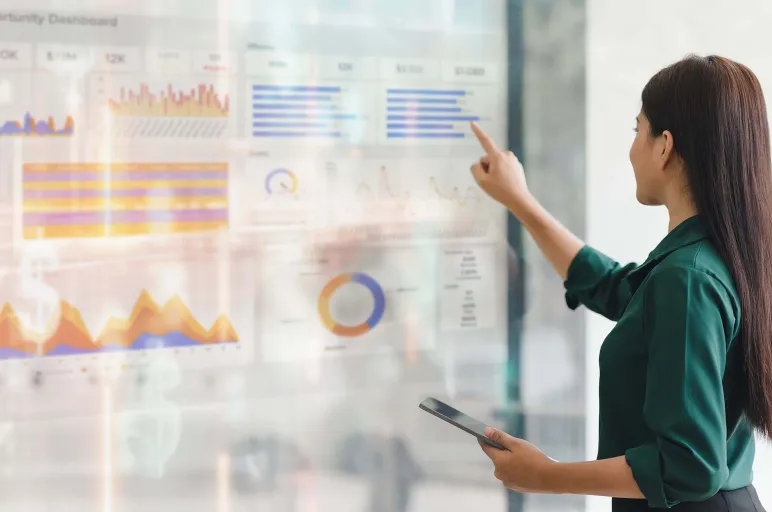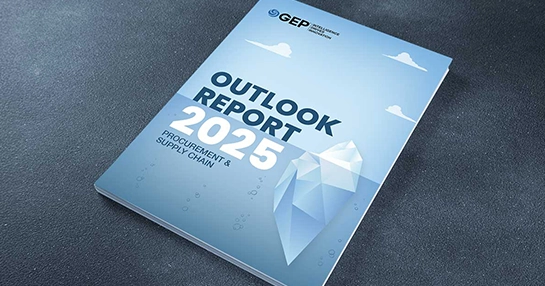
Your Spend Analysis Dashboard Isn’t Telling You the Complete Story. Here’s How to Get It Right
- Most spend dashboards offer limited backward-looking data that doesn’t enable true strategic decision-making.
- Modern spend analysis tools combine AI, real-time data and intuitive interfaces to convert raw spend data into actionable insights.
- To stay competitive, procurement teams must move beyond static reports and adopt dashboards that empower proactive, connected decision-making.
June 25, 2025 | Procurement Software 4 minutes read
Most procurement teams believe they have spend visibility because their dashboard lights up with colorful charts and supplier stats.
However, many dashboards tell only part of the story — a backward-looking, fragmented view of spend that doesn’t support strategic decision-making.
In today’s uncertain business environment, where agility and accountability are non-negotiable, that’s a risky place to be. It’s time for procurement to consider what a spend analysis dashboard should do — and why many tools still fall short.
The Strategic Gap in Spend Analysis Dashboards
A traditional spend dashboard typically aggregates spend data, organizes it into categories, and displays visualizations like pie charts and bar graphs. That’s useful — to a point.
But most dashboards are built for reporting, not strategic enablement. In other words, you can see what happened last quarter — but not why it happened, what’s likely to happen next or how to adjust in real time.
This is the crux of the issue. Strategic procurement teams need more than snapshots. They need narrative — a data-driven storyline that connects supplier behavior, contract leakage, maverick spend, category performance and compliance in a way that sparks action.
Talk to our Expert
When Visibility Becomes Intelligence
Procurement teams across industries are seeing stark differences in outcomes based on the capabilities of their spend analysis tools. Organizations relying on legacy ERP-based dashboards often face limited usability, requiring data analysts and manual effort to extract even basic insights. These tools typically offer static reports and lack the flexibility to adapt to evolving procurement strategies or delve into complex spend patterns.
Companies that have adopted modern, integrated procurement platforms benefit from dashboards that go beyond surface-level reporting. These solutions incorporate layered data, such as supplier risk scores, market pricing benchmarks and tail-spend indicators, into an interactive interface. Spend analysis dashboards allow users to filter by business unit, geography, or supplier, and drill into granular details in real time.
The impact is clear: with better tools, procurement teams can act earlier, identify cost-avoidance opportunities proactively, and support strategic planning with credible, actionable intelligence. This shift marks the evolution from basic visibility to true spend intelligence, where data doesn’t merely describe the past but helps shape smarter decisions for the future.
The Modern Spend Analysis Dashboard: What Good Looks Like in 2025
So, what makes a spend analysis dashboard truly strategic — not just functional?
Here’s a checklist based on best-in-class platforms:
• Unified data model
Combines internal and external data (contracts, POs, invoices, risk metrics, ESG data) in real time.
• Customizable views for different roles
What a CPO needs to see isn’t the same as what a category manager does.
• AI-assisted insights
Flags anomalies, predicts budget overruns and recommends actions.
• Drill-down capability
Allows users to investigate spend by supplier, category, business unit or region without relying on IT.
• User-friendly interface
No data science degree required! Dashboards should be intuitive and fast, with self-service analytics.
Crush Tail Spend for Good
Get AI-Powered Tools to Turn Tail Spend Chaos Into Savings
A Strategic Ally, Not Just a Tool
A truly modern spend dashboard informs and empowers procurement. It goes beyond reflecting current spend and helps you manage it proactively. It enables a shared language between procurement and the C-suite, translating complexity into clarity and alignment.
The best platforms on the market today provide real-time insights in a user-centric experience that aligns with how procurement leaders actually think and work. They make it easier to spot inefficiencies, defend budgets and take bold action without needing to wrestle with data silos or wait on reporting cycles.
Is Your Dashboard Keeping Up With Your Ambitions?
Is your current dashboard enabling strategy or just summarizing history?
As procurement’s role expands into risk management, ESG stewardship and enterprise value creation, your analytics capabilities need to evolve in kind. If your team still depends on static dashboards or outdated tools, you’re likely missing out on insights hiding in plain sight.
The good news: you don’t need to rip and replace your tech stack. But you do need to prioritize platforms with spend dashboards that are designed for today’s complexity and tomorrow’s strategy.
Ready to see what a smarter spend dashboard can do? Look for solutions that combine deep analytics with effortless usability — and let your data finally work as hard as you do.
FAQs
How does a spend analysis dashboard help identify cost-saving opportunities?
The analytics on a spend analysis dashboard can highlight patterns in spending, flag maverick purchases and reveal opportunities to consolidate suppliers or negotiate better contracts.
How does AI enhance spend analysis dashboards?
AI improves data classification, detects anomalies and uncovers trends that might be missed manually, giving procurement teams a smarter, faster way to manage spend.
Why should procurement teams upgrade to a modern spend analysis dashboard?
Modern dashboards offer real-time insights, better data accuracy and interactive visuals — helping procurement teams act faster and make more informed decisions.



